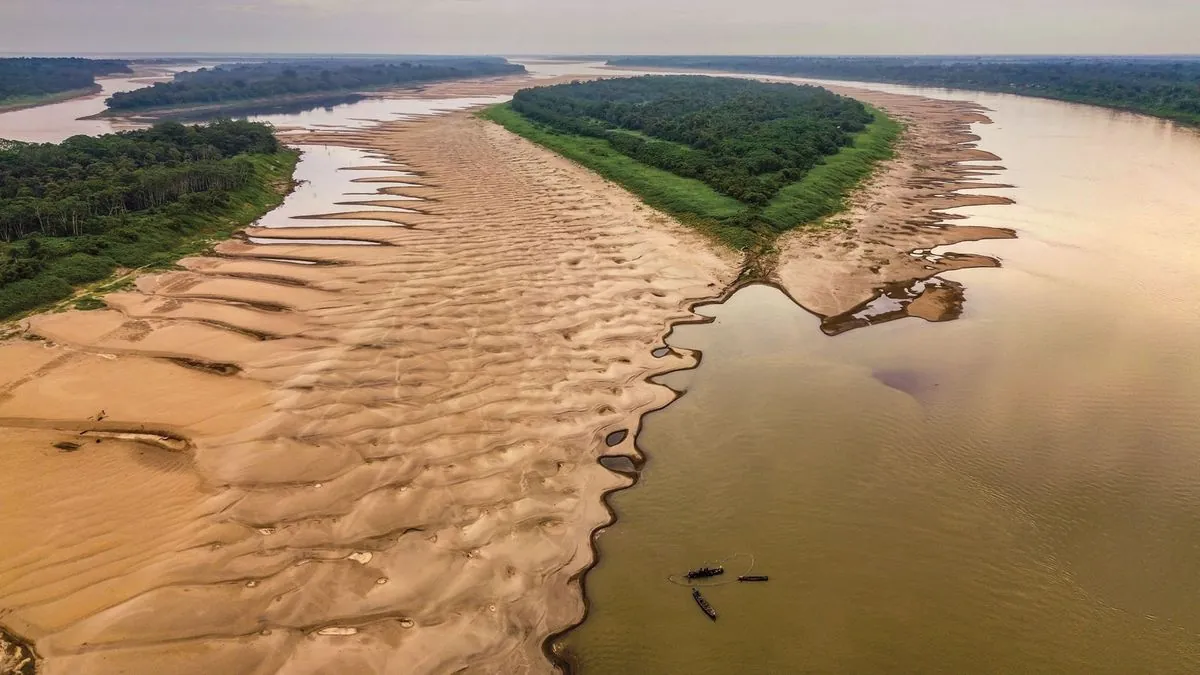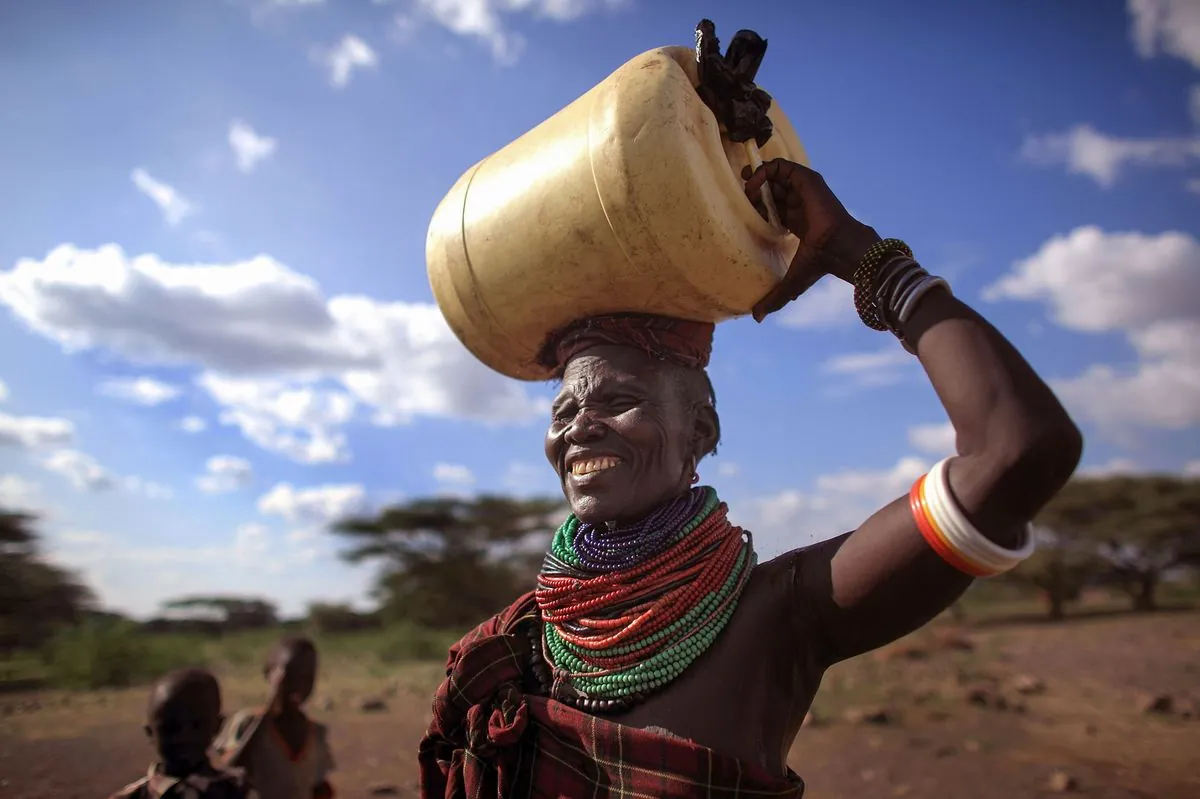Amazon Drought Strains Ribeirinhos' Water Access and Transportation
Record low water levels in Amazon rivers challenge traditional riverbank communities. Residents face difficulties in accessing clean water and navigating waterways, relying on external aid for basic needs.

The Amazon rainforest, home to approximately 5.5 million square kilometers of diverse ecosystems, is currently experiencing unprecedented challenges due to record-low water levels in its rivers. This situation is severely impacting the Ribeirinhos, traditional riverbank dwellers who rely heavily on these waterways for their daily lives.
The Amazon River, known as the world's largest river by water volume, typically contains about 20% of the world's freshwater. However, recent drought conditions and reduced rainfall have led to a significant decrease in water levels across the Amazon basin. This change is affecting not only the local ecosystem but also the livelihoods of over 30 million people who call this region home.
Francisca das Chagas da Silva, a local resident, highlighted the difficulties faced by the elderly:
"We have to carry it from the riverbanks to our homes."
[[Challenges for the elderly]]
The situation has forced many Ribeirinhos to rely on non-governmental organizations and state government assistance for access to clean drinking water. Joao Ferreira Mendonca, a community leader, expressed concern about the impact on vulnerable individuals:
"Now imagine a person in the hot sun, people with high blood pressure, doing this journey."

The Brazilian Geological Service (SGB) has issued warnings about historically low river levels throughout the Amazon basin. This decline is not only affecting water access but also hampering transportation. The Ribeirinhos, who typically reside in pile dwellings along the riverbanks and use motorboats for travel, are now facing increased isolation.
Rosicleia Gomes Vieira, another resident, noted the difficulties in transporting goods to urban areas due to the low water levels. With the Amazon River's main stem stretching approximately 6,400 kilometers, these navigation challenges are felt across vast distances.
The impact of this drought extends beyond the Amazon region. Brazil, the world's largest exporter of soybeans and second-largest producer after the United States, is experiencing disruptions in soy and corn shipments from center-west states like Mato Grosso, the country's primary grain-growing area.
Climate experts warn that such extreme weather events may become more frequent in the Amazon due to climate change. The Amazon rainforest, which produces about 20% of the world's oxygen and is home to an estimated 390 billion individual trees, plays a crucial role in global climate regulation.
As the situation unfolds, the resilience of the Ribeirinhos and the broader implications for Brazil's agriculture sector remain areas of concern. The current drought serves as a stark reminder of the delicate balance between human communities and the natural environment in one of the world's most vital ecosystems.


































